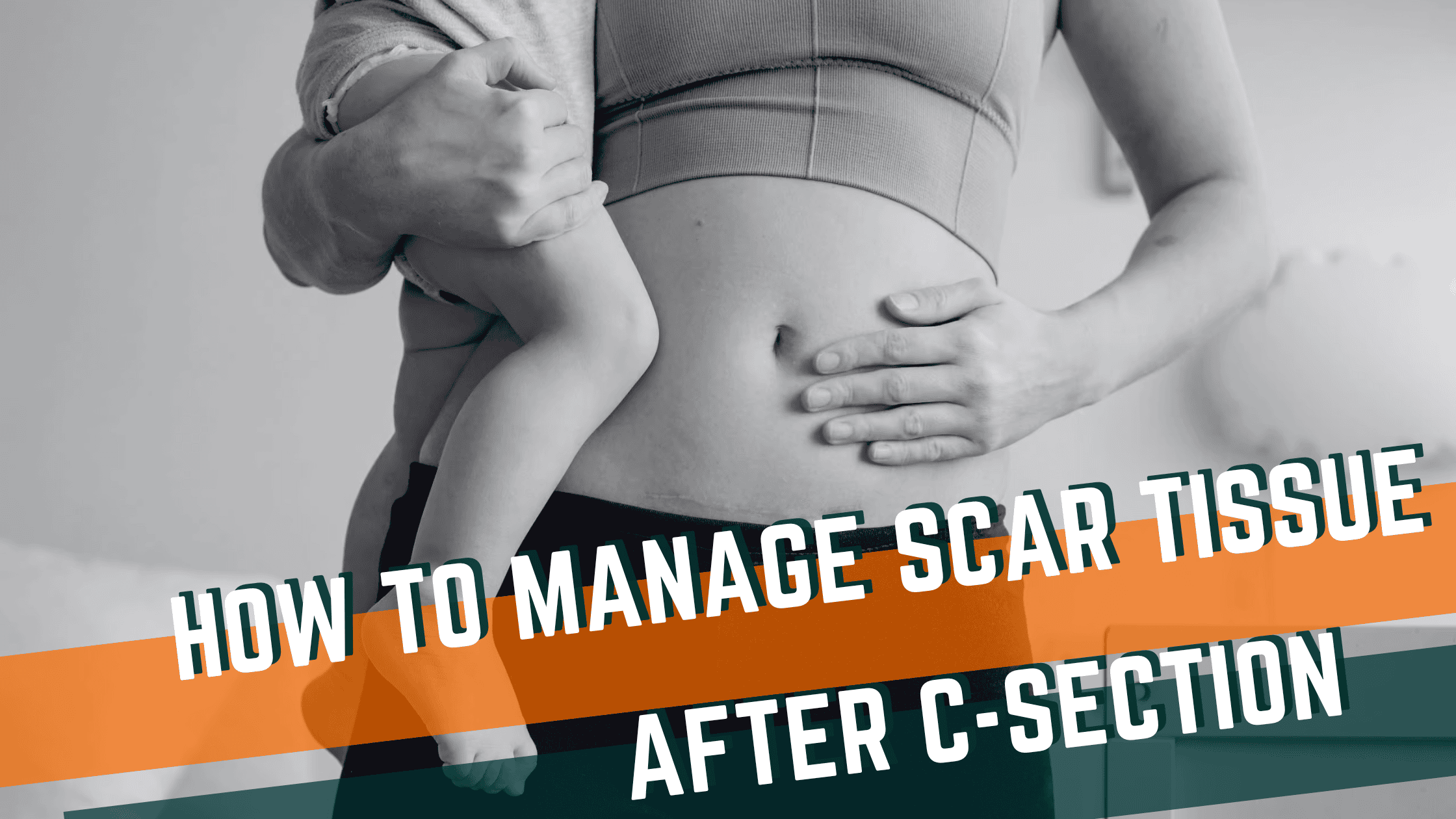
How To Manage Scar Tissue After C-Section
First off, congratulations mama! As you continue to navigate through caring for a little one, know that you also need to take some time to care for yourself. A recent study found that 25% of people report chronic pain due to scar tissue after a C-section, but you are not alone in this!
The C-section scar tissue from the procedure can cause discomfort and/or pain. This is due to the tissue adhesions which can occur during the healing process. The great news is, a pelvic floor physical therapist can use a variety of techniques to improve the mobility and sensitivity of this area. Complications from adhesions can present in several different ways such as scar sensitivity and pain, decreased low back and hip mobility, difficulty bending forward and lifting, urinary issues, and pelvic pain.
What Should the Scar Look Like
An incision is considered healed once it no longer has any scabbing present which occurs within 4-6 weeks. Scars should continue to improve in appearance over coming weeks and depend on several factors such as your individual body’s healing process. The goal is that the scar becomes closer to your natural skin color and moves as the rest of your skin does with minimal to no dimples or ridges.
Here are some things to keep an eye out for as you move through this process.
In the first 4-6 weeks, you want to make sure you are checking for signs of infection which include:
-Increased redness around the scar and can spread to the abdomen
-Increased swelling around the incision/scar
-Warm to touch.
Once the scar has healed it you want to perform gentle massaging around the scar to help decrease the sensitivity or c-section scar tissue pain and promote healing with increased blood flow.
As sensitivity decreases, and once your provider gives you the all clear, you can begin massaging the scar itself. You can check for adhesions by massaging over the scar and feeling for ‘ropey-like’ areas and visually inspect it to see if there are any areas that appear to keloid or bump up, or are dimpled in. You want to check this laying down and in standing, as your body’s position may affect how that tissue is moving. By massaging it, you are promoting the fibers to heal in a way that mimics the surrounding tissues and allows for maximal mobility.
A pelvic floor physical therapist is a great resource for assisting you in navigating this process by answering questions, monitoring your incision and helping build a rehab program as soon as 2 weeks after your delivery. Even if it has been many years since you delivered your baby, this tissue can still be mobilized and improved! At Onward we specialize in meeting you wherever you are in your postpartum journey and look forward to assisting you in getting back to feeling like YOU again.
Recent Articles
Why Early Intervention Physical Therapy Accelerates Your Recovery

What to Expect at Your First Physical Therapy Session?

How to Choose a Physical Therapist

The Top 5 Misconceptions About Physical Therapy

The Complete Guide to Physical Therapy

